 |
| Home │ Audio
Home Page |
Copyright © 2016 by Wayne Stegall
Updated November 25, 2016. See
Document History at end for
details.
|
|
Butterworth Filter Synthesis
Introduction
It is often desirable to design filters of higher than first order to some desirable specification such as flattest frequency response, sharpest cutoff, or linear phase. Here it is useful to begin by showing how a filter is designed for flattest frequency response, that is extended without ripple as flat as possible toward the –3dB point. The Butterworth filter meets this requirement and is usually called a maximally flat response filter. Figures 1–4 show these filters increase in sharpness of cutoff as order goes from two to five.| Figure
1:
Magnitude
plot
of
2nd order Butterworth filter. |
Figure 2: Magnitude plot of 3rd order Butterworth filter. |
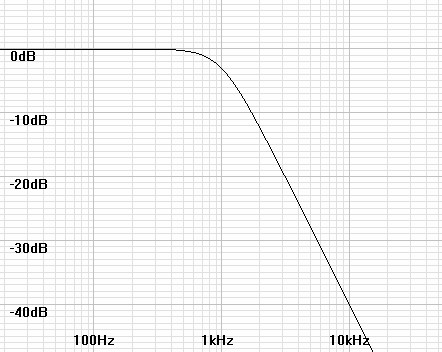 |
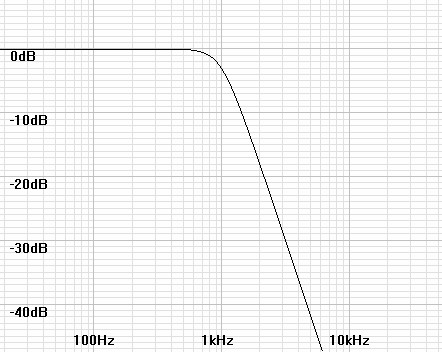 |
| Figure 3: Magnitude plot of 4th order Butterworth filter. | Figure 4: Magnitude plot of 5th order Butterworth filter. |
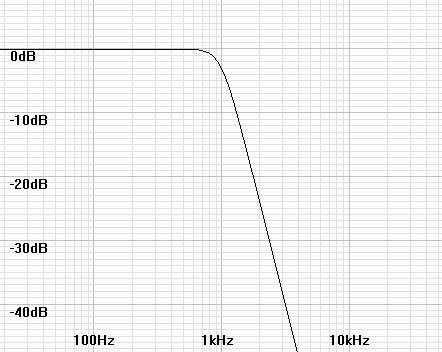 |
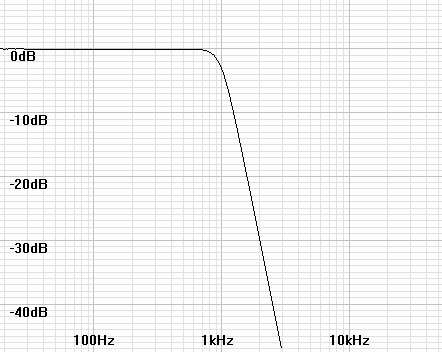 |
Synthesis of poles
The mathematics for Butterworth synthesis begins with designing a pole
plot. The pole specification arranges the poles in the left
half-plane spaced evenly on a circle equidistant from the origin of the
s-domain and centered symmetrically about the real axis. Where N
is the order of the filter, the angle spacing between adjacent poles is
180°/N. Figures 5-8
show Butterworth pole
plots from 2nd to 5th order.| Figure 5: S-domain plot of 2nd order lowpass Butterworth poles. | Figure 6: S-domain plot of 3rd order lowpass Butterworth poles. |
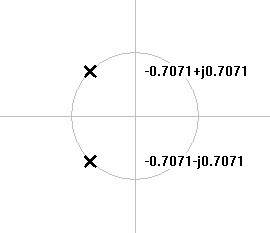 |
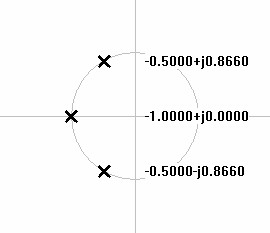 |
| Figure 7: S-domain plot of 4th order lowpass Butterworth poles. | Figure 8: S-domain plot of 5th order lowpass Butterworth poles. |
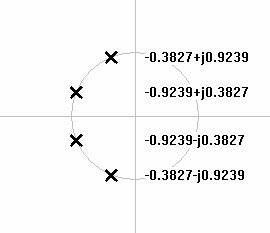 |
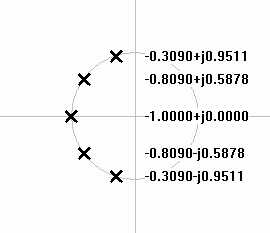 |
For N stages i to N the pole angles are calculated by
| (1) |
θpole-i = 90° + |  |
180° × (2i – 1)
2N |
 |
|
|
Deriving stage parameters from pole plot
If the Butterworth filter is implemented as an active filter, the
design will consist of separate stages in sequence. Complex pole
pairs will combine into second order stages. Any real pair will
be represented by a simple first order stage. The fact that the
poles are all equidistant from the origin of the s-domain plot
corresponds to another property of the filter that all of the stages of
the filter have the same resonant frequency (or cutoff frequency for
any first order stage required by an odd order filter.). The
final filter has a –3dB at that same frequency. It is really only
necessary to specify the quality factor (Q) for each second order stage
calculated from the angle of one of its complex poles. Equation 2 derives the Q for each
angle θ calculated from equation 1.For integer i ≤ N/2
| (2) |
Qstage-i = |
1
2|cos(θpole-i)| |
The individual magnitude responses of the sequential stages multiply (add in a decibel plot) to give the final response. Figure 9 below plots the magnitude response of each stage in a 5th order filter before multiplying to produce the plot of figure 4 above.
| Figure 9: Magnitude plot of 5th order Butterworth filter stages. |
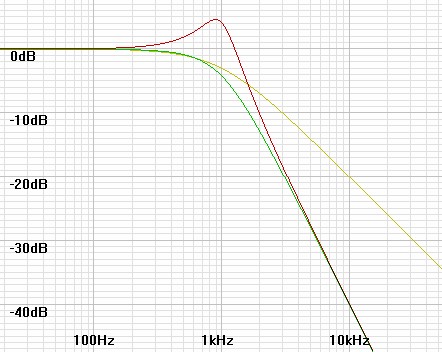 |
Highpass transformation
Usually the first design step creates a lowpass filter, then if a highpass filter is desired the defining frequency of each stage is inverted geometricall around the overall -3dB frequency as calculated in equation 3. In this case, because all defining frequencies are the same as the cutoff, no change in frequency results. Then the hardware stages will be lowpass or highpass as the overall system is.| (3) |
fpole-highpass = |
f3dB-system2
fpole-lowpass |
| Figure 10: Magnitude plot of 3rd order Butterworth filter. |
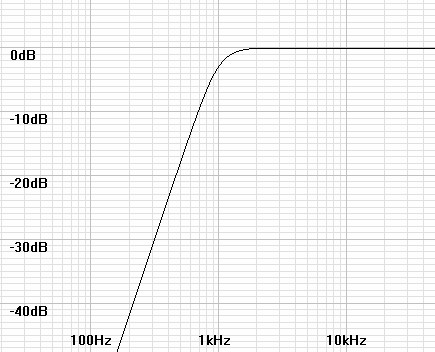 |
Example
Calculate pole angles for 5th order filter| θpole-1 = 90° + |  |
180° × (2(1) – 1)
2(5) |
 |
| θpole-1 = 90° + |  |
180° × 1
10 |
 |
| θpole-1 = 90° + 18° = 108° |
Continuing as above, each pole is 180/N° or 36° from the previous, thus creating the following sequence of remaining angles.
θpole-2 = 144°, θpole-3 = 180°, θpole-4 = 216°, and θpole-5 = 252°
Now calculate quality factors. Where a pole is one of a complex conjugate (that is, that it is mirrored across the horizontal axis) only one of them has to be calculated.
| Qstage-1 = |
1
2|cos(108°)| |
| Qstage-1 = |
1
2|-0.309017)| |
= 1.61803 |
Continuing the same calculation gives Q values for the remaining stages.
Qstage-2 = 0.61803 and Qstage-3 = 0.5
The Q for stage three is only given for completeness, as it is known from examination that 180° represents a first-order stage. The remainder of poles are complex conjugates of ones already calculated for stages 1 and 2.
|
|
Hardware implementation
All filters with only poles – Butterworth, Chebychev, Bessel, and
others – use the same sort of hardware of which there are
multiple variations. Therefore hardware implementation is another
subject.|
|
Document History
November 18, 2016 Created.
November 25, 2016 Added highpass bode plot and example of
calculation of pole angles and Qs.